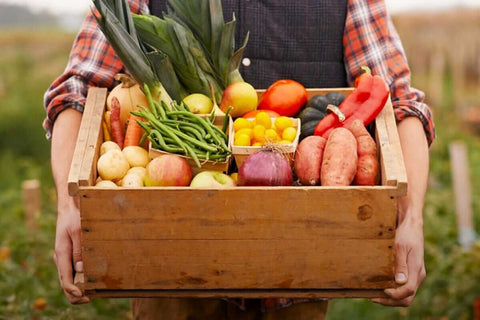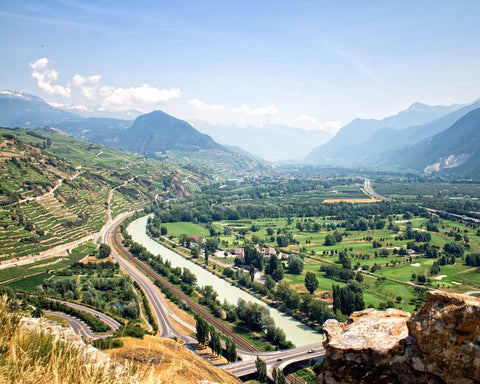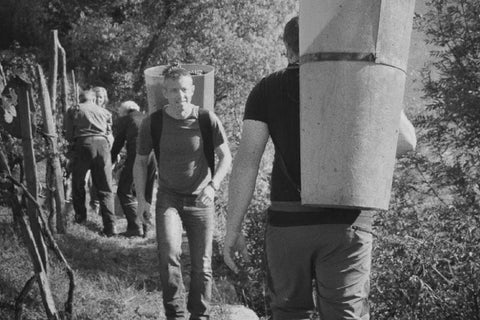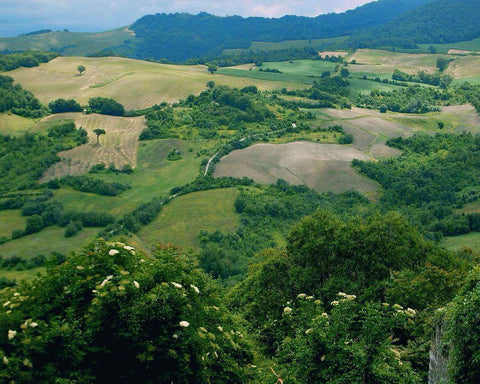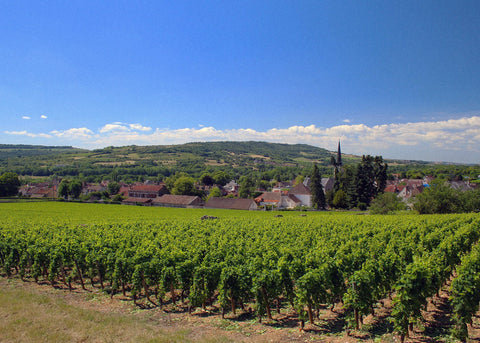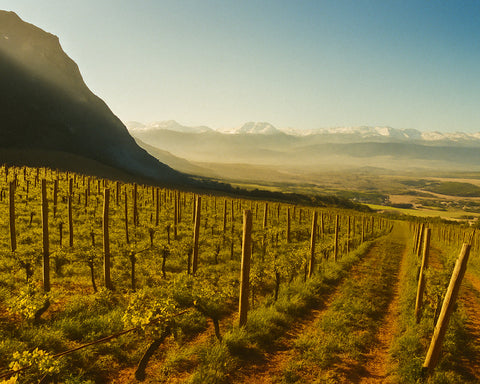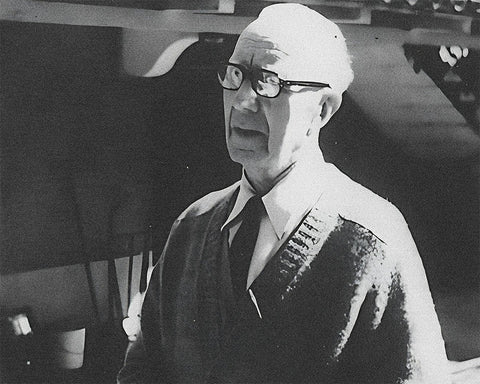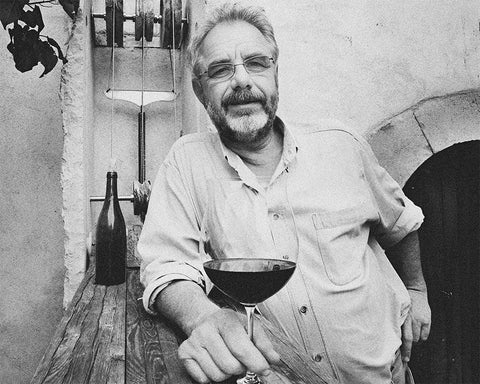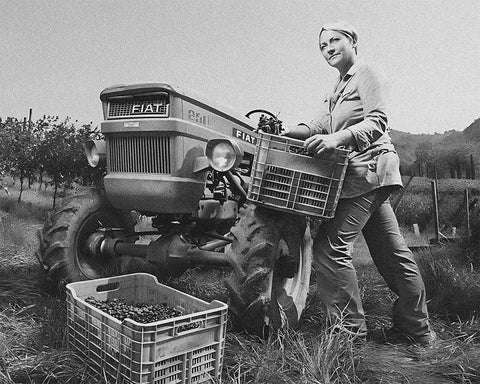Wine is so complicated! Or is it? Like any other human activity that has been going on for thousands of years, vine tending and winemaking definitely carry a heavy baggage of specific terms, definitions, and idiosyncratic ways of being in this world. Let's examine some of these in this ever-growing glossary.
Table of Content
[A] [B] [C] [D] [E] [F] [G] [H] [I] [J] [K] [L] [M] [N] [O] [P] [Q] [R] [S] [T] [U] [V] [W] [X] [Y] [Z]
Let's start with some Natural Wine-specific glossary terms
Natural Wine:
Natural wine represents a commitment to pure, unadulterated winemaking. Produced without the addition or removal of any substances during its creation, natural wines often remain unfiltered, leading to natural sediments. A hallmark of these wines is the absence of added sulfites, relying solely on the minimal amounts that naturally occur during fermentation.
Organic Wine:
Originating from a dedication to environmentally friendly farming practices, organic wine is crafted using grapes nurtured according to the principles of organic farming. Such principles prohibit the use of artificial chemical fertilizers, pesticides, fungicides, and herbicides. Beyond the grapes, the whole vineyard ecosystem is considered, fostering biodiversity and maintaining ecological harmony.
Biodynamic Wine:
Biodynamic wine elevates the principles of organic farming. It adopts a holistic view, treating the vineyard as an interconnected ecosystem. Adhering to biodynamic agricultural guidelines, this approach integrates unique treatments, lunar cycles, and even broader cosmic rhythms into the farming process. While all biodynamic wines are inherently organic, they delve deeper into nature's interconnected web.
Sulfites:
Sulfites are compounds naturally formed as by-products during fermentation, serving as essential preservatives and antioxidants in wines. While many winemakers add extra sulfites to ensure wine stability, natural wines typically contain only those sulfites naturally produced during fermentation.
Spontaneous Fermentation:
Spontaneous fermentation embodies a natural approach to initiating the fermentation process. Eschewing commercially cultivated yeasts, winemakers depend on native yeasts present on the grapes and within the winery to commence fermentation. This technique is a distinctive trait of natural winemaking, infusing a unique character into each bottle.
Skin Contact:
Skin contact entails fermenting grape juice alongside grape skins, yielding wines with an intensified color and unique texture. Frequently linked with "orange" or "amber" wine production, this technique gives rise to wines with a radiant hue and rich palate.
Unfiltered:
Many in the natural wine community opt against filtering their wines. While filtering can produce clarity, unfiltered wines retain maximum flavor and character. Consequently, these wines may exhibit cloudiness and contain sediment.
Zero-Zero Wine:
"Zero-Zero Wine," a term cherished by natural wine aficionados, refers to wines with "zero additives and zero taken away." Essentially, these wines are presented in their most unaltered form, without added sulfites and devoid of interventions during winemaking.
Terroir:
Terroir, a concept deeply entrenched in French wine culture, encompasses the unique blend of natural factors, such as soil type, climate conditions, and sunlight, shaping a wine's character. Natural wine proponents often contend that their methods offer the truest representation of a wine's terroir.
Amphora Aging:
Amphora aging, an age-old wine-aging technique, is witnessing a resurgence in contemporary natural winemaking. Wines undergo aging in clay containers termed amphoras. This strategy facilitates gentle micro-oxygenation without the flavor influences of wooden barrels, yielding a pure taste profile.
Pet-Nat (Pétillant Naturel):
Pet-Nat, short for Pétillant Naturel, describes a method for crafting sparkling wines. The initial fermentation remains incomplete when the wine is bottled and sealed. Fermentation completion in the bottle produces a natural carbonation. Often, these wines have a cloudy appearance due to yeast presence and are renowned for their fresh and lively flavors.
Glou Glou Wine:
Derived from the French onomatopoeia "glouglou," which mimics the sound of gulping or drinking quickly, "Glou Glou Wine" refers to wines that are easy-drinking, juicy, and refreshing. These wines are typically light-bodied with low tannins, making them perfect for casual sipping. Often associated with natural wine circles, Glou Glou wines are the kind you can drink effortlessly, capturing the essence of fun and conviviality in a bottle.
Ancestral Method:
A technique used to produce sparkling wines where the primary fermentation is incomplete, and the wine is bottled to finish fermentation, trapping carbon dioxide and giving the wine its bubbles.
Anthocyanins:
Natural pigments found in grape skins responsible for the red and blue colors in wine. Their presence and interaction with tannins can affect a wine's hue and aging potential.
Atelier:
A term often used in France to denote a workshop or studio where wine blending occurs. It's where winemakers craft their blends, adjusting proportions to achieve the desired style and flavor profile.
Autolysis:
The process where dead yeast cells break down after fermentation, releasing compounds into the wine. It's crucial in sparkling wine production, adding complexity and bready aromas.
Bâtonnage:
A French term referring to the stirring of lees in a wine barrel, enhancing the wine's flavor and mouthfeel.
Botanicals:
Herbs, spices, and other plant-based additives sometimes used in the winemaking process, particularly for vermouths and certain aromatized wines.
Cap Management:
Techniques used to mix the cap (floating grape solids) during fermentation, ensuring even extraction of color, flavor, and tannin from the grape skins.
Chapeau Brun:
A term referring to the brownish color that the cap of grape skins can take on if it becomes oxidized during fermentation.
Charmat Method:
A method for sparkling wine production where the secondary fermentation happens in large tanks rather than individual bottles, often resulting in fresher, fruitier bubbly wines.
Clone:
A genetically identical plant produced from a single vine. Different clones of the same grape variety can produce wines with notably different characteristics.
Coulure:
A viticultural hazard where grapes fail to develop after flowering due to cold or wet conditions, leading to reduced yields.
Crush:
The harvest season when grapes are picked and crushed, marking the start of the winemaking process.
Delestage:
A process of fermenting red wines where the juice is periodically drained off the skins and then returned, aiding in color and tannin extraction.
Dosage:
In sparkling wine production, it's the addition of a small amount of wine (often mixed with sugar) to the bottle before final corking, influencing the wine's sweetness level.
Dumb Phase:
A period in a wine's life, typically during aging, when its flavors and aromas become muted or disjointed. It's a temporary phase, after which the wine often emerges more harmonious and expressive.
Ébauche:
A preliminary or initial blend of still wines that will be used to produce sparkling wine.
Élevage:
The period between fermentation and bottling, akin to a wine's adolescence, when it evolves and matures in barrels or tanks.
En Primeur:
A French term referring to the practice of buying wines early while they're still in the barrel, months before they're bottled and released on the market.
Estufagem:
A unique aging process for Madeira wines where they're intentionally exposed to heat, accelerating aging and developing distinct flavors.
Fermentation Arrest:
Halting the fermentation process deliberately, often by chilling or adding spirits, to leave residual sugar in the wine or increase alcohol content.
Filtration:
The process of removing suspended solids from wine before bottling, ensuring clarity and stability.
Flor:
A layer of yeast cells that forms naturally on the surface of certain wines, notably in Sherry production, protecting the wine from oxidation and contributing unique flavors.
Feints:
The tails or last portion of a distillation run, often discarded or redistilled due to impurities and undesirable flavors.
Graft Union:
The point on a grapevine where the rootstock and scion are joined together through grafting.
Goût de Terroir:
The taste of the place; a wine's expression of its specific origin, encapsulating soil, climate, and local grape varieties.
Green Harvest:
Intentional removal of unripe grape bunches, reducing yields to ensure that the remaining grapes ripen more fully and produce higher quality wines.
Headspace:
The space left unfilled in a wine container, like a barrel or tank, which can be a source of oxidation if not managed properly.
Hot Press:
A process where grape skins are heated before pressing, extracting more color and flavor. Common in the production of certain rosé wines.
Hydrometer:
An instrument used to measure the density of a liquid. In winemaking, it's used to gauge sugar levels in grape juice or must.
Inoculation:
The intentional addition of specific yeast strains to grape juice or must to guide the fermentation process.
Isoenzymes:
Enzymes that differ in structure but catalyze the same chemical reactions during fermentation and other win emaking processes.
Jeroboam:
A large wine bottle with a capacity of three liters, equivalent to four standard bottles.
Jug Wine:
Low-priced, bulk-produced wine typically sold in large containers or jugs. It's often considered of lesser quality compared to bottled wines.
Kabinett:
A German term indicating wines made from fully ripened grapes, often lighter with lower alcohol content.
Kieselguhr:
A type of diatomaceous earth used in the filtration of wines to remove suspended particles.
Lactic Bacteria:
Bacteria responsible for malolactic fermentation, converting sharper malic acid into softer lactic acid.
Lees Aging:
The process of allowing wine to remain in contact with dead yeast cells post-fermentation, adding complexity and texture to the final wine.
Lignification:
The process where grape stems turn woody, indicating grape maturity and readiness for harvest, especially for red wines.
Maceration Carbonique:
A fermentation method where intact grape clusters are fermented in a carbon dioxide-rich environment before crushing, leading to fruity and soft wines.
Malic Acid:
A naturally occurring acid in grapes and wine. It can be converted to softer lactic acid through malolactic fermentation.
Marc:
The solid remnants (skins, seeds, stems) of grapes after pressing, often distilled to produce spirits or used as compost.
Must Weight:
A measurement of the sugar content in grape juice or must, often used to estimate potential alcohol levels in the finished wine.
Négociant:
A wine merchant who buys grapes, juice, or finished wines from growers and producers, then labels and sells them under their own name.
Noble Rot:
A beneficial form of the Botrytis Cinerea fungus, which can dehydrate grapes, concentrating their sugars and flavors. It's essential for certain sweet wines like Sauternes and Tokaji.
Oechsle:
A scale used predominantly in Germany to measure the must weight of grape juice, indicating ripeness levels and potential alcohol content.
Orange Wine:
A type of wine made by fermenting white wine grapes with their skins, similar to red wine production. The result is a wine with a distinctive orange hue and robust character.
Overcropping:
The practice of letting grapevines produce too many grapes, which can lead to diluted or unripe wines due to the vine's inability to support the excessive fruit.
Pétoncle:
French term for a scallop, sometimes used in wine descriptors to refer to a delicate briny or sea-like quality in certain wines, especially whites from coastal regions.
Pet-Nat:
Short for "Pétillant Naturel." A method of producing sparkling wine where the primary fermentation finishes in the bottle, trapping carbon dioxide and creating natural bubbles.
Phenolics:
Compounds present in grape skins, seeds, and stems that influence a wine's flavor, color, and texture. Tannins are a well-known group of phenolics.
Pied de Cuve:
A small starter fermentation used to kickstart the primary fermentation, ensuring a healthy and vigorous yeast population.
Press Fractioning:
Separating the juice obtained during pressing into different fractions based on quality, with the initial, gentler pressings often producing superior wine.
Punch Down:
A method of cap management where the floating grape skins are physically pushed down into the fermenting juice, aiding extraction.
Qvevri:
Large, egg-shaped clay vessels used for fermenting and aging wines in traditional Georgian winemaking.
Quercetin:
A type of flavonoid found in wine, especially in reds, known for its antioxidant properties.
Reticulation:
A pattern of interconnected lines or networks observed in certain wine crystals, often related to tartrate formations.
Riddling:
A process in sparkling wine production, especially in the traditional method, where bottles are gradually tilted and turned to collect sediment at the neck for removal.
Saignée:
A method of producing rosé wine by "bleeding" off a portion of red wine juice after limited contact with skins, then fermenting it separately.
Sparging:
The process of introducing a gentle stream of inert gas, usually nitrogen or carbon dioxide, into wine to remove dissolved oxygen and prevent oxidation.
Stemmy:
A term used to describe the flavor or aroma of wine reminiscent of green stems, often resulting from including stems during fermentation.
Sur Lie:
A French term indicating that a wine has been left to age on its lees, often seen on bottles of Muscadet and some sparkling wines.
Tannins:
Polyphenolic compounds found in wine, contributing to its structure, aging potential, and sometimes astringency. Tannins are primarily derived from grape skins, seeds, and oak barrels.
Tartrates:
Crystalline deposits that can form in wine, especially in cooler conditions. They're harmless and consist mainly of potassium bitartrate.
Tertiary Aromas:
Complex aromas that develop in wine as it ages in the bottle, resulting from slow chemical reactions over time.
Ugni Blanc:
A white grape variety widely cultivated in France, especially known as the primary grape used in Cognac production.
Ullage:
The air space left in a wine bottle or barrel, between the wine and the cork or lid. Managing ullage is crucial to prevent excessive oxidation.
Véraison:
The period in the grape ripening process when the berries change color and begin to soften. For red varieties, green grapes turn red or purple, and for white varieties, they turn yellow or translucent.
Vermouth:
A type of aromatized wine infused with various botanicals, including herbs, spices, and barks. It's often consumed as an aperitif or used in cocktails.
Vegetative:
Refers to aromas and flavors in wine reminiscent of green or growing plants, often indicating underripe grapes or specific grape varieties.
Vin de Paille:
A French term for "straw wine," a dessert wine made by drying grapes on straw mats to concentrate sugars before fermentation.
Vinification:
The entire winemaking process, from grape harvest to bottling.
Volatile Acidity:
Undesirable acidic compounds in wine, especially acetic acid, which can impart a vinegary smell. It's considered a wine fault if present in excessive amounts.
Whole Cluster Fermentation:
A winemaking technique where entire clusters of grapes, including stems, are fermented together, often resulting in spicier, more structured wines.
Wine Diamonds:
Crystalline deposits, primarily potassium bitartrate, that can form in bottled wine, especially when exposed to low temperatures.
Wine Fault:
An undesirable characteristic in wine resulting from flaws in the winemaking process, storage conditions, or grape quality.
Xylem:
The vascular tissue in grapevines responsible for transporting water and nutrients from the roots to the rest of the plant.
Yeast Assimilable Nitrogen (YAN):
Nitrogen compounds available for yeast metabolism during fermentation, influencing fermentation speed and health.
Yeast Autolysate:
Compounds released into wine when yeast cells break down after death, contributing to flavor and mouthfeel.
Zymase:
A complex of enzymes found in yeast cells that catalyze the conversion of sugar into alcohol and carbon dioxide during fermentation.
Zymology:
A subset of biochemistry focusing on the study of fermentation and its practical applications, especially in winemaking and brewing.

